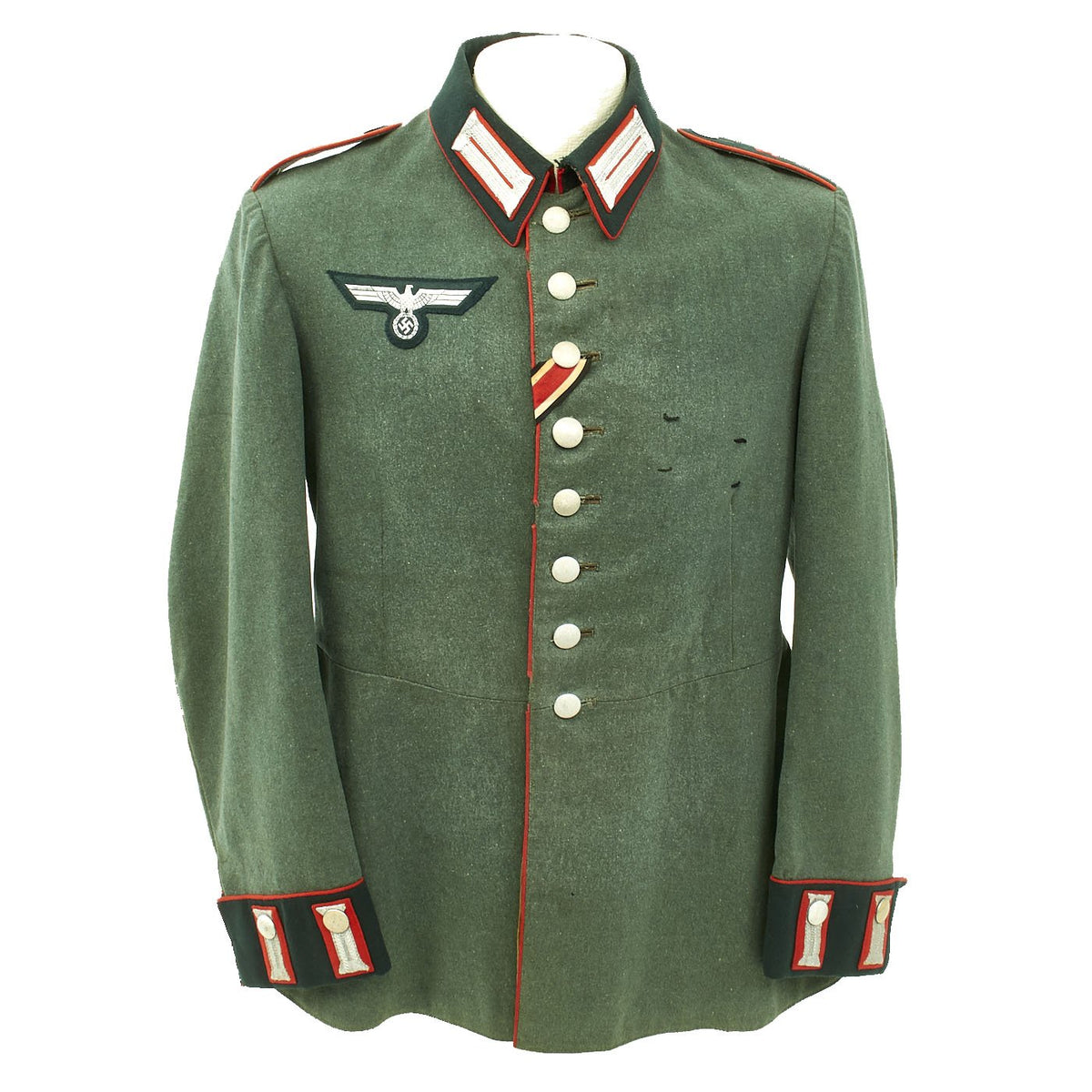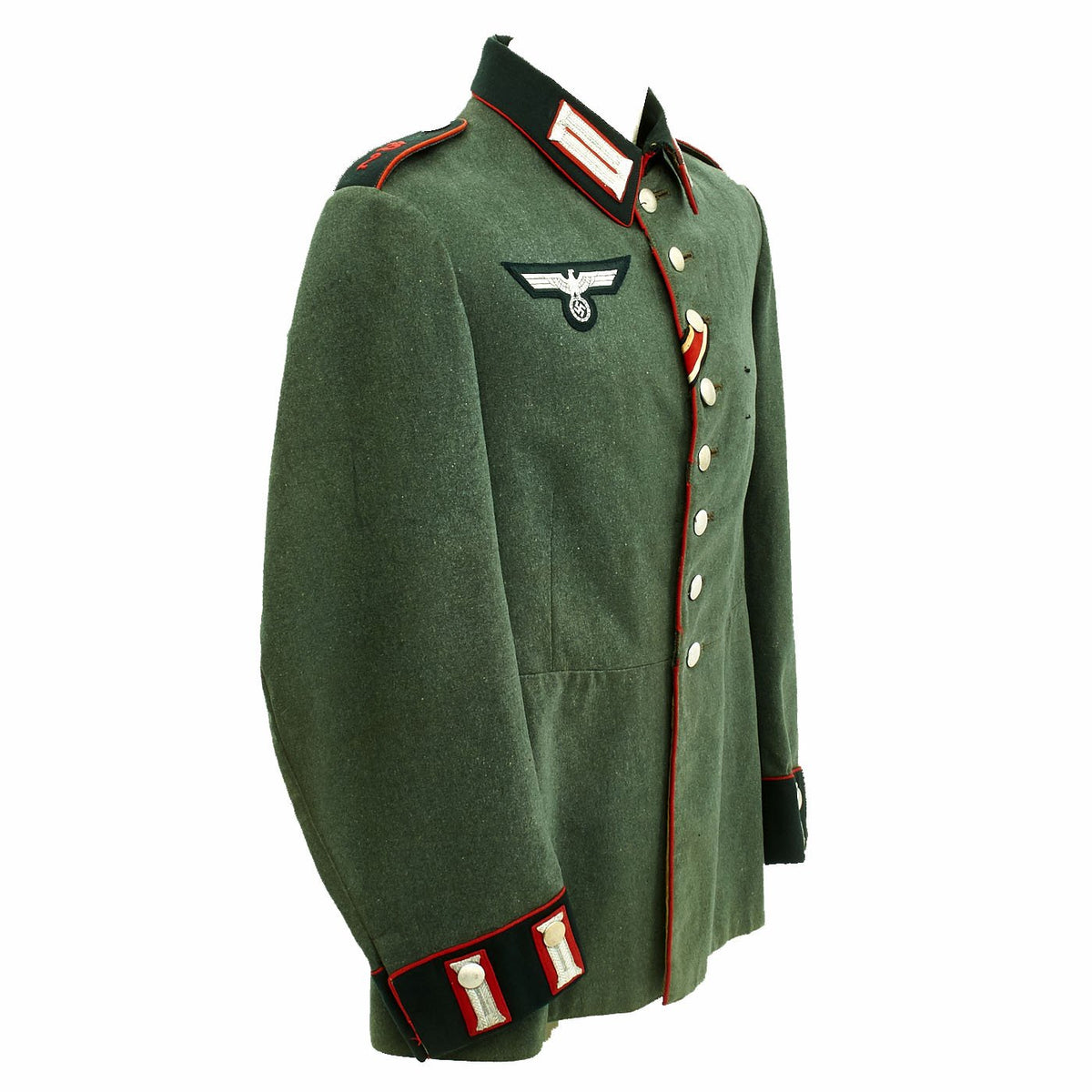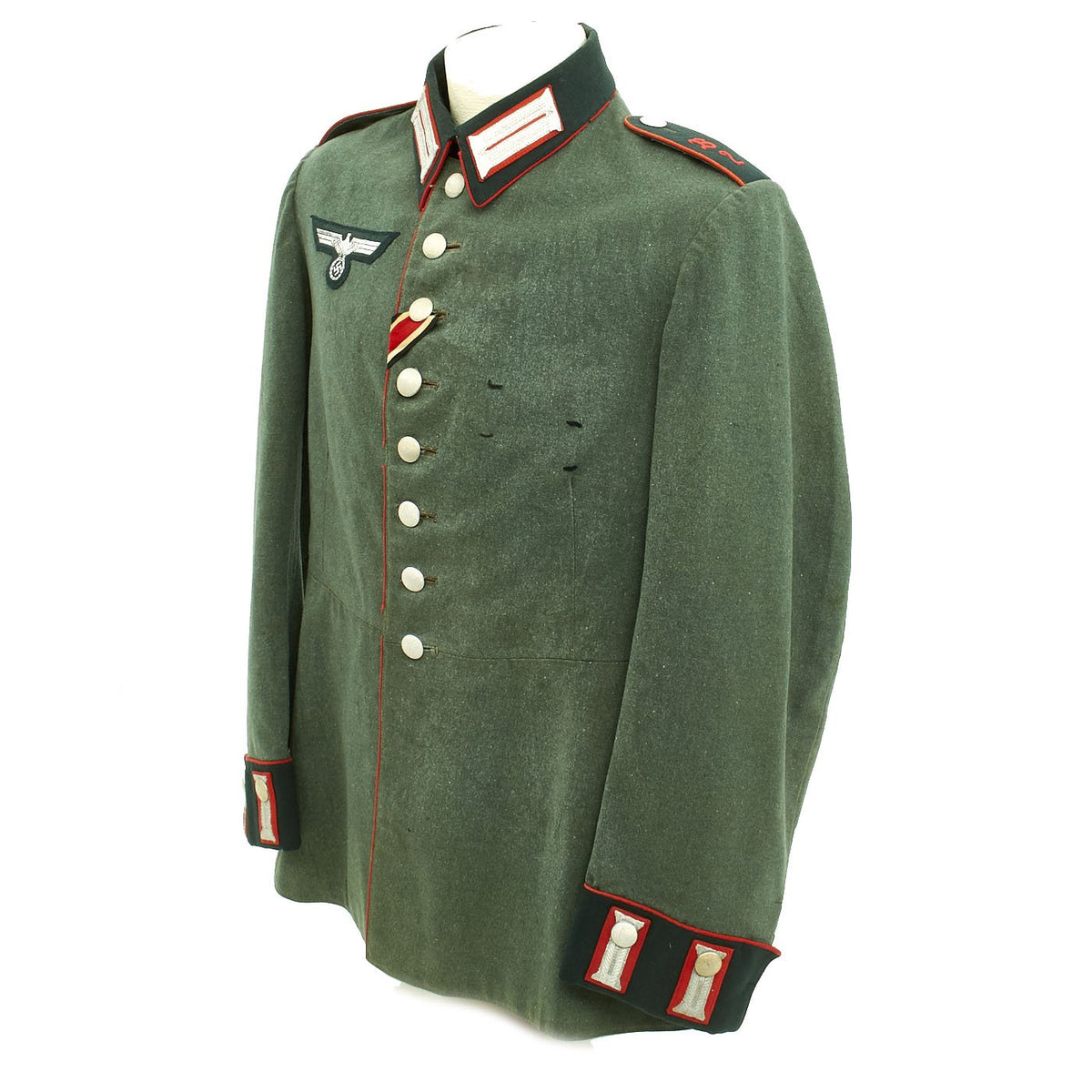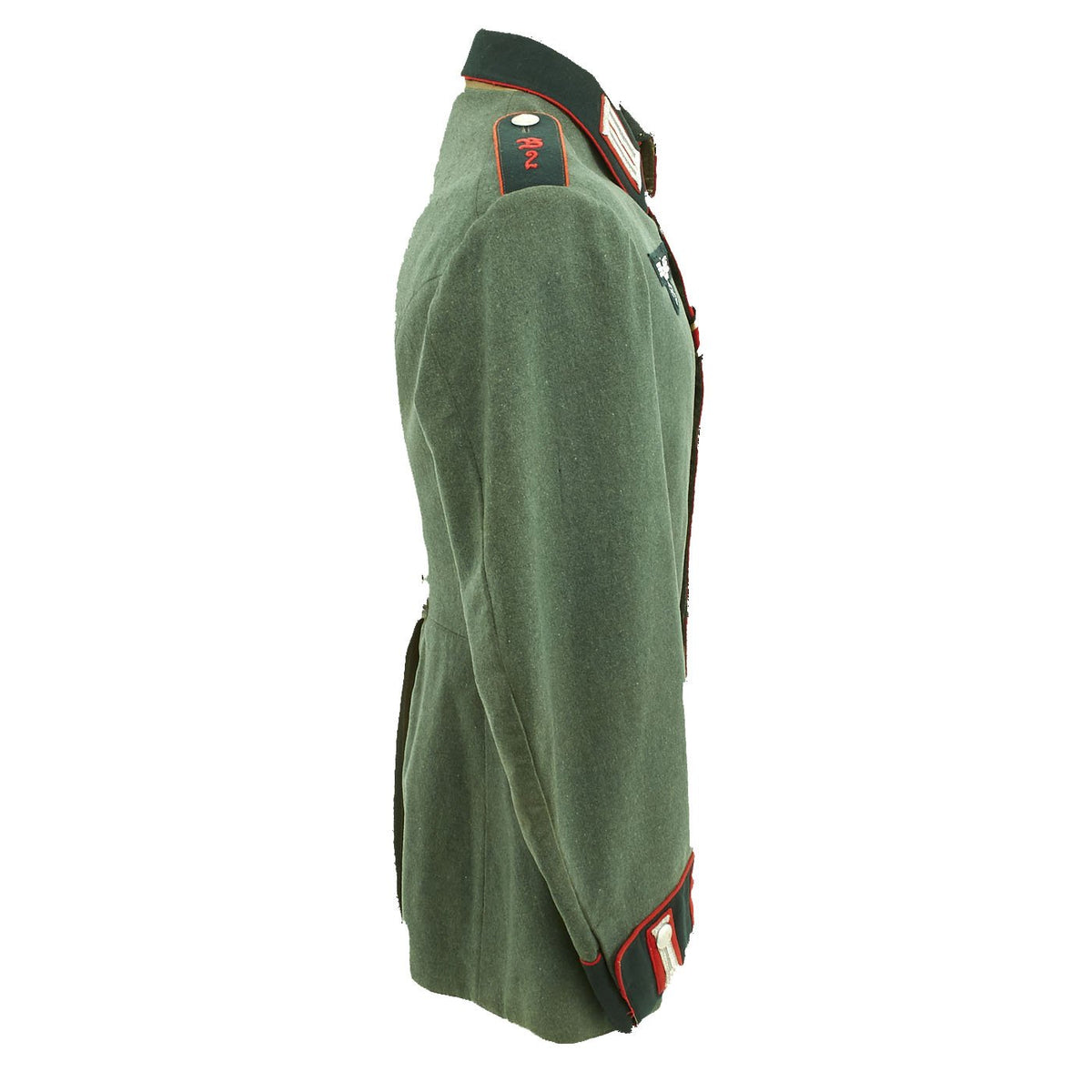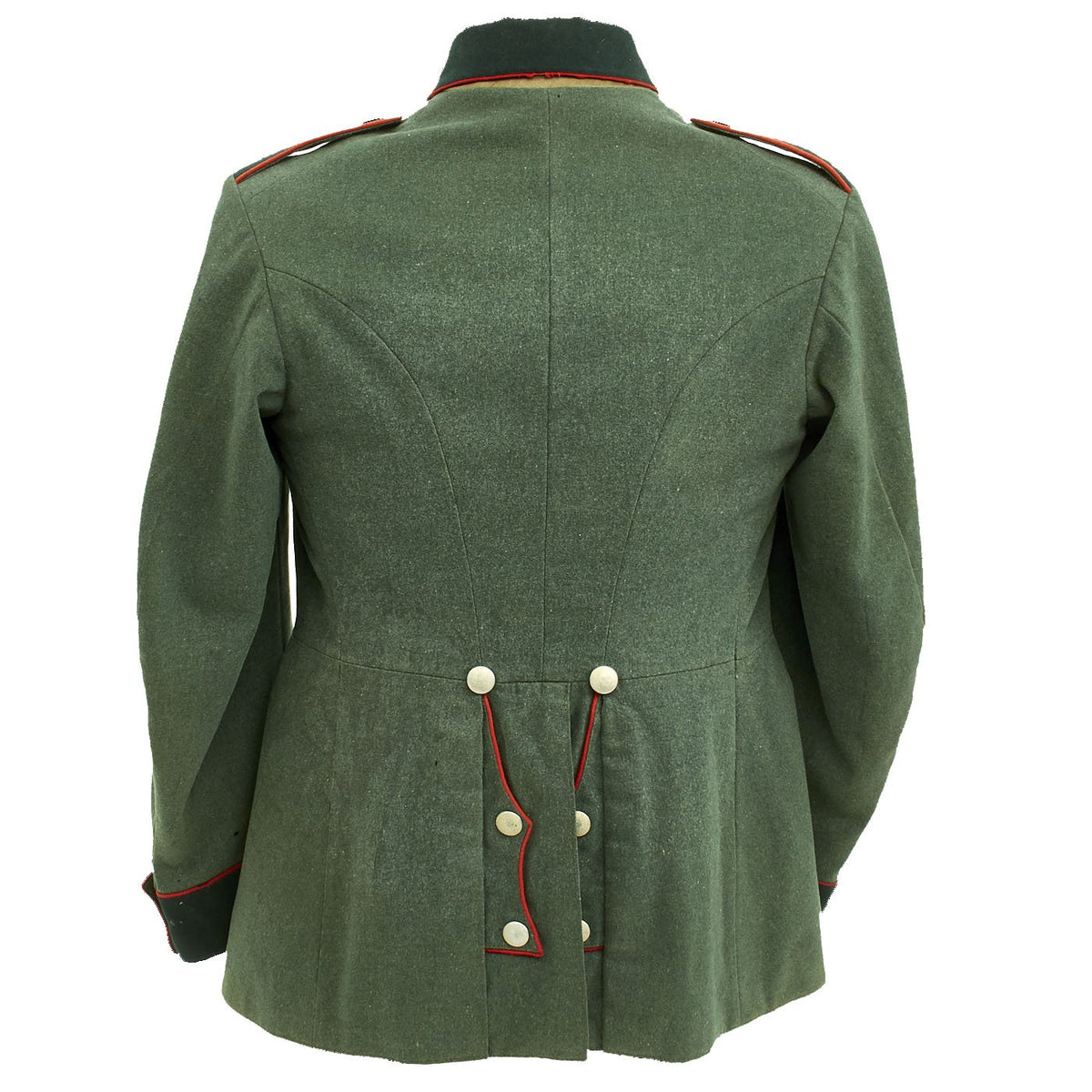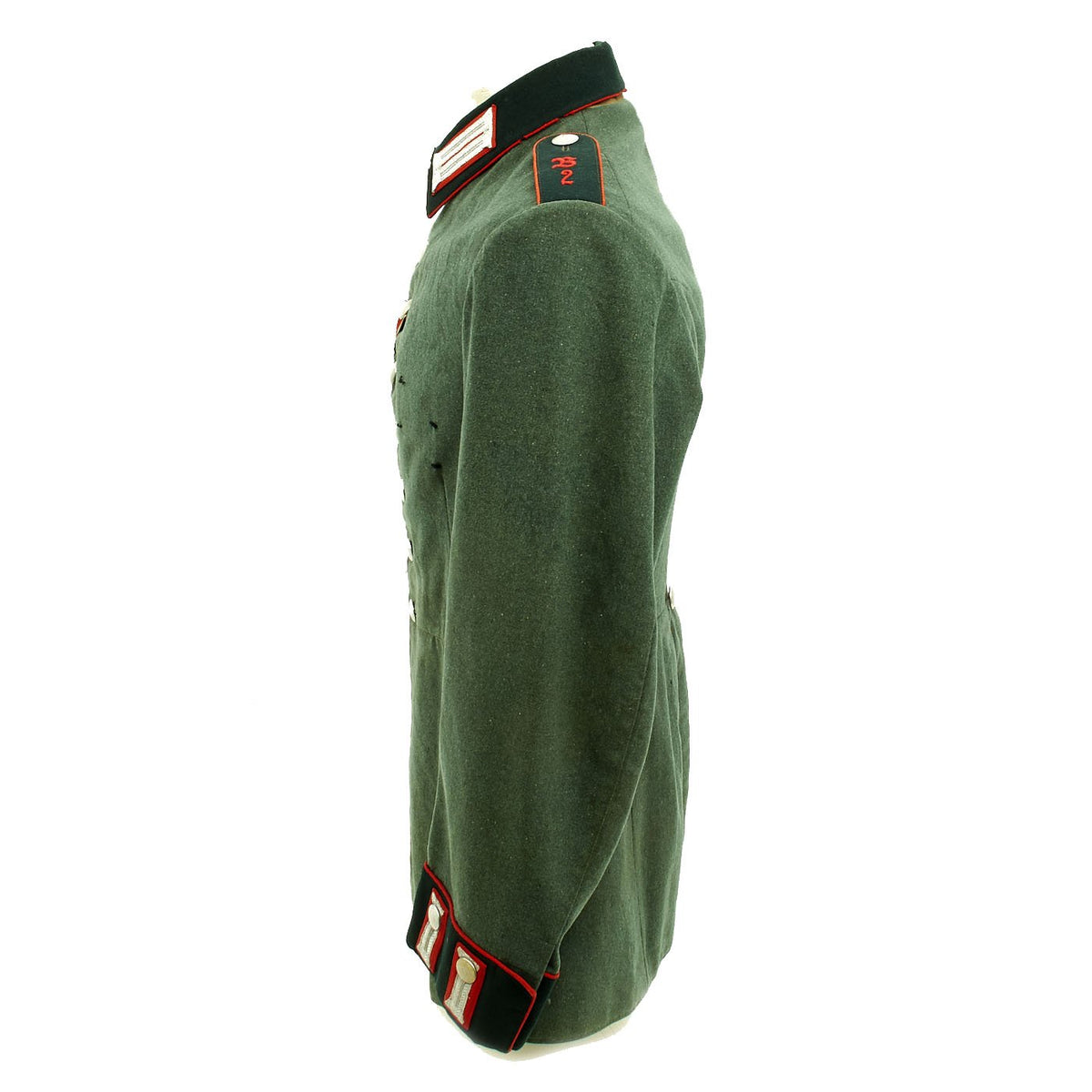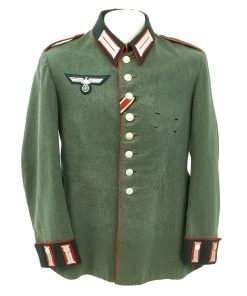Original German WWII Heer Artillery Waffenrock – Berlin 1936 Original Items
$ 995,00 $ 248,75
Original Item: Only One Available. This is a beautiful early Heer Enlisted Artillery Waffenrock. The base material of the uniform is made of a fine feldgrau colored wool. The wool shows no signs of any physical damage by misuse or mothing. The collar is wrapped in a dark-green wool, and is decorated with insignia. The base material of the two litzen on each side of the collar opening are red, which designates Artillery. The two litzen themselves are woven from a fine silver flatware thread. The collar, and its insignia, are without any noticeable damage or mothing. The “sew-in” style shoulder boards of this Waffenrock have a dark green base wool, which is piped in red. “B 2” is neatly chain-stitched on the shoulder boards. This is the regiment number the soldier was attached to. The buttons holding the top portion of the boards to the Artillery Waffenrock are silvered and feature the number “1”, indicating this soldier belonged to 1st Company of Artillery Regiment 2B. The front breast eagle is an earlier moss-green colored First Pattern executed in silver wire. The eagle is without damage and is originally sewn to the tunics breast by very neat hand stitching. Eight silvered buttons adorn the front of the tunic and all appear to be originally attached. Iron Cross button hole ribbon is nicely stitched to the jacket as well as award loops on left chest.
The lower french style cuffs of the sleeves have a dark-green based wool, and is adorned with red piping and silver litzen. The interior of the Artillery Waffenrock is lined with a fine rayon. The interior of the Waffenrock is marked with idpot stamp and date B36 which stands for Berlin 1936.
Approximate Measurements:
Collar to shoulder: 9.5”
Shoulder to sleeve: 24”
Shoulder to shoulder: 16”
Chest width: 18”
Waist width: 17”
Hip width: 23”
Front length: 29.5”
The Deutsche Heer, the Army of the German Military during the Third Reich, was established in 1935. Over the next 10 years, German Army troops wore a huge variety of uniforms. Enlisted men generally wore uniforms issued from military depots. Most enlisted soldiers wore wool trousers and a tunic with four external pockets, known as a Feldbluse (field blouse). Before the war, soldiers also were issued a walking-out tunic, with flashy insignia, called the Waffenrock. Officers wore the same general uniform styles, but as officers had to supply their own uniforms, they usually wore tailor made versions. There were also myriad varieties of specialized uniforms worn by certain units or in specific situations, from the stylish black wool “wraps” worn by crews of armored fighting vehicles, to the drab HBT work uniforms. There were tropical and summer uniforms, and camouflage smocks for combat troops. For troops operating in winter climates, there were long wool overcoats, fur clothing articles, and padded jacket and trousers sets. In 1944, a new uniform was introduced, featuring a short jacket with only two external pockets. Most but not all German Army uniform jackets bore the Heer emblem of an eagle holding a swas.
Fast Shipping with Professional Packaging
Thanks to our longstanding association with UPS FedEx DHL, and other major international carriers, we are able to provide a range of shipping options. Our warehouse staff is expertly trained and will wrap your products according to our exact and precise specifications. Prior to shipping, your goods will be thoroughly examined and securely secured. We ship to thousands clients each day across multiple countries. This shows how we're dedicated to be the largest retailer on the internet. Warehouses and distribution centres can be located throughout Europe as well as the USA.
Note: Orders with more than one item will be assigned a processing date depending on the item.
Before shipping before shipping, we'll conduct a thorough inspection of the items you have ordered. Today, the majority of orders will be delivered within 48 hours. The delivery time will be between 3-7 days.
Returns
The stock is dynamic and we cannot completely manage it because multiple stakeholders are involved, including our factory and warehouse. So the actual stock may alter at any time. It's possible that you may not receive your order once the order has been made.
Our policy is valid for a period of 30 days. If you don't receive the product within 30 days, we are not able to issue a refund or an exchange.
You can only return an item if it is unused and in the same state as the day you received it. You must have the item in its original packaging.
Related products
Uncategorized
Uncategorized
Angolan Rebel 1970s era 60mm Inert Display Mortar from Angolan Civil War Original Items
Uncategorized
Uncategorized
Uncategorized
Uncategorized
Uncategorized
Uncategorized
Uncategorized
Band of Brothers ORIGINAL GERMAN WWII Le. F.H. 18 10.5cm ARTILLERY PIECE Original Items
Uncategorized
Uncategorized
Armored Burgonet Helmet & Polearm from Scottish Castle Leith Hall Circa 1700 Original Items
Uncategorized
Uncategorized
Uncategorized
Uncategorized
Uncategorized
Uncategorized
Uncategorized
